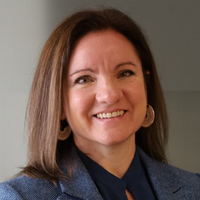Infoveranstaltung CAS Wirtschaftspsychologie – Neue Trends
En ligne
What causes the beauty premium in elections? Two decades of research show that more physically attractive candidates get more votes. Most studies assume a direct link between voter evaluations of candidate appearance and electoral support, even though many voters may not have knowledge of how a candidate may look. We argue that the causal story is more complicated: good-looking candidates may get more votes in part because they raise more money and are nominated to more winnable districts by party elites. To evaluate our argument, we evaluate the facial attractiveness of 1,200 candidates for the 2019 Canadian federal election using pretrained image classification models based on convolutional neural networks (Lindholm et al. 2024). Combined with existing datasets on candidate characteristics (e.g., gender, party affiliation, vote share, competitiveness of the election) and donations (number and amount of received donations as well as gender of each donor), this measure allows us to model both the direct effect of attractiveness and of the proposed mediators on political donations and eventual vote share. Data on donor gender also allows us to test expectations for gendered responses to candidate appearance. We will also explore the relationship between facial dominance and trustworthiness of candidates by political party and total donations. The attractiveness premium is often taken as evidence of voter incompetence; assessing alternative explanations for this relationship can help determine whether that interpretation is warranted and provide evidence toward potential biases in how elites nominate and support candidates.

Professor Amanda Friesen is interested in how social identities and individual dispositions interact with social and political contexts, particularly as it pertains to resilience and efficacy. Her methodological approaches draw from behaviour genetics, psychophysiology, personality psychology, experimental design, and other social and life science methods.

Dr. Tobias Rohrbach works as an early post doc at the Institute of Communication and Media Studies, University of Bern. His research focuses on the intersection of gender and media in political communication, political psychology, and health communication. He specializes in mixed methods designs combining a wide range of methodological approaches, including observational and experimental designs, quantitative and qualitative analysis, as well as computational methods. He completed a joint PhD in communication research (at the University of Fribourg) and in political science (at the University of Amsterdam) on media-based mechanisms of gendered evaluations of political candidates.